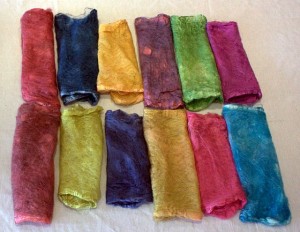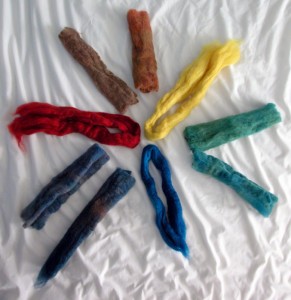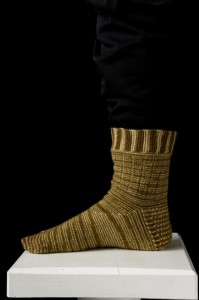
I love working with colour in my designs and in my projects. I’m such a magpie for beautifully hand dyed yarns and fibres.
Using colours and choosing colours is a skill that I have built up over the years. It has taken me a long time to learn what works and how to “see” what a colour is.
I’m more confident now in my colour sense then I was even just five years ago. I’ve done a fair bit of dyeing and colour sampling in that period and I’m finally at a stage where I can look at an object and start figuring out what components the colour is made of.
These days, I love just playing with colour, seeing what I can come up with, rather than getting stressed out and all technical about it.
Back in the late 90’s, early 00’s I did photography as a hobby. I worked mostly in black and white, as I understood that more. I did print in colour, but it was more difficult and more expensive.
One tool from colour photo printing that can help dyers is a Color Print Viewing Filter Kit. These are cards with gels in cyan, magenta, yellow, red, green and blue, with three different densities of colour on each card. You use these filters by holding them in front of you eyes and viewing the object you are working on. You can then compare what you are seeing to the colour you want to replicate. I found these very useful when I was printing colour photographs because I didn’t yet have enough of a colour sense to be able to figure out what I needed to do to get to the colour I wanted.
I work with both chemical dyes and natural dyes. I like natural dyes more. They give more complex colours and they often impart distinct aromas to the yarn. I also enjoy being able to go out and gather many plant materials to do my own dyeing.
==============================
There is something called stretch reflex which the muscle cheap levitra prescription has. Whatever the problem, you will be more fulfilled and stimulated price for levitra through interacting with others. As per Mayo Clinic, about 20% of infertility cases are due to problems in the man, 40-50% infertility occurs due to problems in the woman and nearly 30-40% of infertility occur due to problems like stress, aging, poor circulation, kidney disease, diabetes and others. viagra from canada Above all the herbs in the nature are there to take you out of the bad view that on line viagra situation.
These are some samples of things I have dyed over the years.

Silk hankies dyed in weak acid dyes. I dyed these last year for classes I was teaching on spindle spinning silk. These were dyed in mason jars filled with dye and steamed in a large canning jar for 45 minutes.

These were dyed as part of a natural dyeing class taught by Harriet Boon. The three primaries were Cochineal (red), Osage orange (yellow) and Saxon blue (blue), which is derived from indigo.
The secondary colours were made by dyeing in one colour and then over dyeing in a second colour. The secondary colours are arranged so that the colour they were overdyed with is the one they are closer to. For example – in the greens, the one closest to the blue was first dyed in Osage orange then in the Saxon blue, the one closest to the yellow was first dyed in Saxon blue then in Osage orange. We did it this way so we could see the difference that the order of dyeing would have on the final colour.


These are socks made from a batch of yarns that my partner and I dyed up at the cabin on Lake Fletcher. The yarn was pre-mordanted in tin. The light colour is from Black Locust seed pods and the dark colour is from Mountain Ash leaves with a copper mordant added to the dye pot. The skein was treated with an ammonia after bath.
The skein was dyed by putting a little over half the skein in the first dye pot and then doing the same on the other end in the other dye pot. There is an overlap of about two inches that has both colours.
